Types of Diets | Benefits | Risks | Coaching Tips | What to Eat | Diet quiz
Pop quiz: Which of the following is a plant-based diet?
- The Mediterranean diet
- The vegetarian diet
- The vegan diet
- The flexitarian diet
The answer: All of the above.
If you’re surprised by that revelation, know this: You’re 100% normal.
After all…
When it comes to plant-based diets, there’s a heck of a lot of confusion.
In this article, we’ll attempt to clear things up by exploring several questions.
- Is someone really “plant-based” if they consume a range of whole foods—including red meat? Or do people need to give up the consumption of all sentient beings in order to earn the label?
- What are the pros and cons of plant-based, vegetarian, and vegan diets?
- What’s worse: Eating red meat or highly-processed plant foods?
- What should you eat on a plant-based diet in order to get enough protein, iron, calcium, and other important nutrients?
- How can you know whether a plant-based diet is right for you?
- What do nutrition coaches need to know to help clients succeed on plant-based and vegetarian diets?
Plus, you’ll find a quiz that can help you test your diet.
What are plant-based and vegetarian diets?
Let’s start with the debate about plant-based diets and meat.
Some plant-based eaters include meat—and some don’t.
This even includes people who identify as vegetarians.
Imagine a continuum, with 100% carnivore at one end and 100% vegan (no animals or animal products) at the other.
On that continuum, plant-based eaters fall closer to vegans than they do carnivores, eating more plants than meat. But, as the graphic below shows, “more plants than meat” allows for lots of variations.
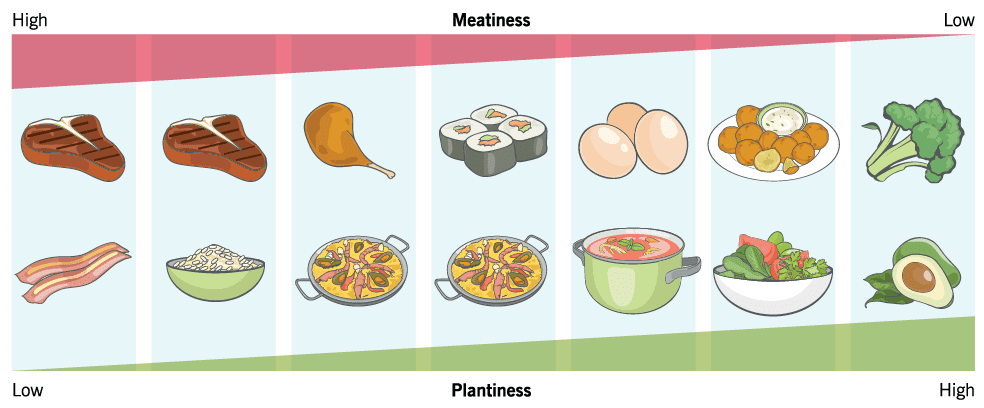
▶ Strict vegans fall into the “plant-based” bucket, as the “plantiness” of their diet is 100 percent.
▶ Generally, vegetarians don’t eat meat or seafood, but do sometimes consume animal products such as eggs and dairy. Though their food choices are less plant-focused than a vegan’s, they’re still plant-based eaters.
▶ Flexitarians, semi vegetarians, or part-time vegetarians tend to consume meat and seafood—either occasionally or in small amounts. But because they eat more plants than meat, they also fall into the plant-based bucket.
▶ People who follow Mediterranean or Paleo diets might eat meat as often as every day. But they tend to also eat a lot of whole plant foods. As long as plants make up a significant portion of what they eat, we’d consider them plant-based, too.
This chart (see below) shows what different plant-based eaters are willing to eat and not eat.
The above only paints a partial picture—as many plant-based eaters don’t fit into just one box. There are pescatarians who eat seafood, eggs, and dairy—as well as pescatarians who eat seafood, but no other animal products.
Similarly, some vegetarians and fully plant-based eaters are okay with products made from animals (such as leather or fur), while others are not.
Still other people allow animal products into their lives sometimes—but not other times. For example, one of our clients sees herself as a vegan who never eats animal products in any form—except for cupcakes. If she’s in a bakery and no vegan options are available, she’ll enjoy whatever looks delicious.
Pros of Plant-Based and Vegetarian Diets
Plant-based diets are associated with a lower risk of:
- Heart disease
- Diabetes
- Cancer
- Kidney disease
- Gallbladder disease 1, 2, 3, 4, 5
However, plant-based eaters may be healthier not because they eat less meat—but rather because of the following reasons:
Reason #1: Plant-based diets attract health-conscious individuals.
Generally speaking, plant-based eaters are the kind of people who floss their teeth, exercise, take the stairs, sleep 7 to 9 hours, and get regular check ups.6
In other words, they might be healthier not only because of what they do and don’t eat, but also because of their overall lifestyle.
Reason #2: Plant-based eaters tend to eat more plants. (Duh.)
Plant-based eaters tend to score pretty high on something called the Healthy Eating Index, which is a measure of dietary quality.
Because plant-based eaters usually consume more minimally-processed whole plant foods that have known health-protective effects, they drive down their risk for disease.7
Reason #3: Minimally-processed plant foods tend to be nutrient-dense.
Just one example: A cup of broccoli, berries, or black beans contains more nutrients than a slice of pizza, for much fewer calories. Depending on the plant food, these nutrients can include:
- Antioxidants, which help protect our DNA from free radical damage.
- Phytonutrients, plant chemicals thought to promote good health.
- Myconutrients, health-promoting compounds found in mushrooms.
- Fiber, indigestible plant material that bulks up stool (reducing constipation), as well as helps regulate appetite and control cholesterol and blood sugar.
- Healthy fats like the monounsaturated fats found in avocados and the polyunsaturated fats found in seeds and nuts.
Reason #4: Minimally-processed plant foods tend to fill us up, crowding out processed foods.
Plants contain a lot of water, which adds weight and volume to food, without adding calories. They also contain fiber to slow digestion.
End result: They’re pretty dang filling.
So when people consume more plants, they tend to eat fewer ultra-processed refined foods like chips, cookies, and mac and cheese. 8, 9
(If you’ve ever had a “salad baby,” you know how hard it is to follow up with a milkshake or a bag of chips.)
The Cost of Restricting Food Groups
Whenever you make a dietary change, you face some tradeoffs.
See the chart below: As dietary restrictions increase, time-commitment and nutrient deficiency risk go up, too.
On the other hand, as consumption of highly-processed foods increases, time-commitment drops—while deficiency risk rises.
Reason #5: Strict food rules can work.
It takes work—label reading, food prep, menu scrutiny—to follow a well-rounded plant-based diet, which leads to healthier choices. Plus, if someone’s a strict vegan or vegetarian, the “don’t eat” list can eliminate less nutritious, high-calorie foods, like wings and pork rinds.
(Learn more: The modern diet dilemma: Is it better to eat meat? Go vegan? Something in between? The truth about what’s right for you.)
Is it possible to eat enough protein on a plant-based diet?
Despite popular belief, many plant foods contain decent amounts of protein.
So, protein deficiency among plant-based eaters isn’t as common as you might think.
Check out how plant proteins stack up.
| FOOD | PROTEIN (in grams) | |
|---|---|---|
| Animal-based protein sources | Per palm-sized portion* | |
| Skinless chicken breast, grilled | 31 | |
| Cottage cheese | 25 | |
| Greek yogurt, plain | 22 | |
| Shrimp, cooked | 21 | |
| Eggs | 12 | |
| Plant-based protein sources | ||
| Seitan, cooked | 22 | |
| Tempeh, cooked | 18 | |
| Tofu, drained and cooked | 16 | |
| Plant-based fat sources | Per thumb-sized portion* | |
| Pumpkin seeds | 2 | |
| Peanut butter | 3.5 | |
| Plant-based carb sources | Per cupped hand* | |
| Cooked lentils | 8 | |
| Bread, multigrain | 5 | |
| Pasta | 4 | |
| Non-starchy vegetables | Per fist* | |
| Broccoli | 3 | |
| Spinach | 1 | |
| Carrots | 1 | |
* Palm-sized = 3-4 oz cooked meat / tofu, 1 cup cottage cheese / Greek yogurt, 2 whole eggs; Cupped handful = 1/2-2/3 cup cooked grains / legumes, medium-sized fruit / tuber;
Thumb = 1 tbsp; Fist = 1 cup
A couple of caveats:
▶ Whole foods are important. Clients who regularly consume tempeh, legumes, beans, nuts, and seeds will have little trouble meeting their protein requirements.
On the other hand, clients who eat mostly refined pasta, refined bread, vegan cupcakes, and toaster pastries may struggle.
▶ Plant-based proteins are generally not as rich in essential amino acids—nor are they as well-absorbed—as animal-based proteins.
For folks who rely solely on plants, protein needs slightly increase, compared to omnivores, to account for this protein quality discrepancy. See our article about plant-based proteins to learn more.
The Cons of Plant-Based Diets
Here’s the bad news…
Anytime you omit entire groups of foods, you must work harder to get all the nutrients your body needs. This is especially true if someone:
- Is fully plant-based or vegan.
- Tends to eat a diet rich in highly-processed foods.
To reduce the risk for deficiencies, aim for a diet composed of 80 to 90 percent whole, minimally-processed foods.
Also, consider the following nutrient-specific advice.
Calcium
In addition to keeping bones and teeth strong, calcium helps muscles—including your heart muscle—work properly.
Dairy products offer a particularly rich source, with each serving supplying nearly a third of the 1000 to 1200 milligrams the typical person needs every day.
To get enough calcium from non-dairy foods, use this advice:
▶ Consume several servings of high-calcium plant foods a day. Calcium-rich plant foods include leafy greens (collards, turnip greens, kale), calcium-set tofu, sesame seed butter, blackstrap molasses, okra, broccoli, figs, beans, almonds, edamame, soy nuts, and fortified plant milks. To increase absorption, cook calcium-rich greens rather than consume them raw.
▶ Cut back on salt, alcohol, and soft drinks. When people consume a lot of alcohol, salt, and soft drinks, they tend to take in fewer nutrient-dense, minimally-processed whole foods. For example, when someone chooses a soft drink, they’re not choosing a calcium-enriched plant milk. When they sit down with a bowl of salty chips, by default they’re not having broccoli or figs.
▶ Exercise. Weight-bearing exercise stimulates bones, helping them to increase their density and reduce risk of fractures.
Vitamin B12
Our bodies need B12 to make DNA, strengthen blood vessels, and keep nerves working. Because B12 is involved in red blood cell formation, deficiency can lead to anemia.
Though a few plants contain substances that the body can convert to B12, we don’t absorb and use these substances as readily as the B12 present in animal products.10 Plus, many people over age 50 are already deficient, whether they eat meat or not.
That’s because, as we age, our stomachs make less acid (which breaks down B12) and intrinsic factor (which helps the body absorb B12). And some medications—such as acid blockers—reduce absorption even more.
For these reasons, a daily B12 supplement is a good idea for:
- People over 50.
- People who take medications that interfere with vitamin B12 absorption, such as those used to treat reflux, ulcers, and diabetes.
- People who are partially or fully plant-based.
Even with supplements, some people might show signs of deficiency: fatigue, dizziness or loss of balance, and reduced mental function.
In those cases, their health care provider can check their B12 levels with a blood test and potentially prescribe intramuscular (injected) B12, which is better absorbed than oral (including sublingual) supplements.
Omega-3 fats
These fats are helpful in preventing heart disease as well as important for the development of eye, nerve and brain tissue (especially in fetuses and babies).
Omega-3 fats come in a few forms:
▶ Eicosapentaenoic acid (EPA) and docosahexaenoic (DHA):
The richest sources of EPA and/or DHA are found in sea vegetables (such as seaweed) and seafood, especially fatty varieties like salmon, tuna, herring, mackerel, sardines, and oysters.
▶ Alpha-linolenic acid (ALA):
Flax seeds, chia seeds, hemp seeds, walnuts, soy, dark leafy greens, and cruciferous vegetables are all rich sources of ALA.
Our bodies must convert ALA into EPA or DHA before using it. About 90% of the ALA fat is lost during the conversion. In other words, if you consume 2.5 grams of ALA from plants, your body will only convert and use only about 10 percent, or .25 grams.11
Bottom line: Non-seafood-eating clients will want to include legumes, nuts, flaxseed oil, hemp, ground flaxseed, walnuts, and other ALA-rich foods daily.12
Iron
Because iron carries oxygen around the body, low levels can lead to fatigue.
Animal products are a particularly rich source of a type of iron called heme that our bodies absorb more easily than the non-heme iron found in beans, peas, lentils, and other plants. (Your body absorbs about 15 to 35 percent of the heme iron you eat, but only about 2 to 20 percent of non-heme iron.)
To help boost iron intake and absorption, use this advice:
▶ Increase absorption by consuming iron-rich plant foods with foods high in vitamin C. Use the chart below for ideas. Maybe you make a tofu stir fry with broccoli or a bean salad with tomatoes, peppers, and a squeeze of lime.
| Rich in iron | Rich in vitamin C |
|---|---|
| Pumpkin seeds | Citrus fruit and juices (ex: oranges) |
| Tofu | Cantaloupe |
| Tempeh | Strawberries |
| Edamame | Broccoli |
| Lentils | Tomatoes |
| Beans | Peppers |
| Peas | Winter squash |
| Sunflower seeds | Watermelon |
| Nuts | Guava |
| Hummus | Kale |
| Almond butter | Kiwi |
| Leafy greens | Potatoes |
| Fortified foods | |
| Potatoes | |
| White and oyster mushrooms | |
| Amaranth | |
| Spelt | |
| Oats | |
| Quinoa | |
| Dark chocolate |
▶ Cook with cast iron cookware. Research shows it can increase the iron content of the food you eat.13
▶ Don’t drink coffee or black tea with food. These drinks contain tannins that inhibit the absorption of iron.
People who thrive on plant-based diets
Some people jump right into plant-based eating with gusto and stay immersed for life. They look and feel amazing, so much so that they can’t understand why everyone else doesn’t eat this way.
Other people? They struggle. They don’t feel good and/or just can’t get in the hang of it.
What makes the difference?
People who do best on plant-based diets:
✓ Have an open-minded “I’ll try anything once” approach to eating. Sea veggies? Slimy fermented soy? Bring it.
✓ Embrace minimally-processed whole foods such as vegetables, beans, and lentils.
✓ Have the time and inclination to search out vegetarian recipes, restaurants, and meal-delivery options.
✓ Have support from family/friends who may also follow their lifestyle.
✓ Have a deep “why” for being plant-based, such as “I just can’t stand the idea of harming animals” or “I want to do everything possible to shrink my carbon footprint.”
✓ Are flexible about their plant-based identity. They’re okay consuming eggs, dairy, seafood, or meat from time to time, if no other options exist.
People who struggle on plant-based diets:
✓ Cook for picky eaters who either love meat or hate plant-foods—or both.
✓ Prefer highly-processed refined foods over minimally-processed plant foods.
✓ Lack a strong “why” for going plant-based.
✓ Lack the time and energy to investigate new recipes or restaurants.
How to coach clients on plant-based diets
To help clients succeed, consider this advice.
Strategy #1: Don’t assume you know what clients mean when they say, “I’m a vegetarian” or “I’m plant-based.”
As we mentioned earlier, there are many types of plant-based and vegetarian eaters. So ask questions like:
- What does “vegetarian” or “plant-based” mean to you?
- Could you tell me a little more about what foods you enjoy eating and what foods you choose to eliminate?
- What do you eat and how often?
Clients have given us a wide range of answers to those questions.
Some say they’re vegetarian before dinner. Pre-dinner they eat no meat. During dinner, however, they’ll have whatever everyone else is having.
Others eat vegetarian while at home, but anything goes in social settings.
Strategy #2: Understand their why.
Different people have different reasons for adopting a plant-based diet—and some of those reasons are more powerful drivers of motivation than others.
It’s probably easy to see how someone who is allergic to eggs could easily stop eating them for the rest of their life.
But let’s say someone has a vague notion that “meat is bad”—based on a documentary they watched. And they happen to love bacon. And burgers.
Sure, their vague “meat is bad” perception might motivate them… for a while. But as the memory of the documentary fades, they’ll probably find that bacon and other beloved foods creep back in.
(BTW, if nutrition fads leave you frustrated, check out: How to talk to clients (and your mother) about the latest Netflix documentary.)
In these cases, we like to use an exercise called “the 5 Whys.”
Originally used by the Toyota Motor Corporation and adapted for nutrition coaching by Precision Nutrition, it cuts to the core of why we want something.
Ask your client: Why do you want to go plant-based?
Then, based on whatever the client offers, ask why again.
And so on, up to five times.
Here’s an example from one of our vegetarian clients. It took 4 whys to get to his true reason:
| Coach: So, tell me a little more about your reasons for being a vegetarian. Why do you want to do this? |
| Client: Well, I grew up vegetarian. In my religion, we don’t eat meat. |
| Coach: That’s really interesting. Tell me a little more about that. Why do you believe you shouldn’t eat meat? |
| Client: {Laughs} I don’t personally believe that. My religion says that. |
| Coach: Okay, I see. But why do you do it if you don’t really believe it’s bad? |
| Client: See, it’s my family. My siblings and parents are more devout than I am. Don’t get me wrong. I’m still religious. I’m just not as religious as they are. And I don’t want them to think badly about me. |
| Coach: I can understand why you’d want to remain close to your family. I’m curious: If you’re only a vegetarian because you don’t want your family to think badly of you, why do you remain vegetarian when they’re not around? |
| Client: Truthfully? I don’t. I mean, I don’t eat a lot of meat, mostly because of guilt. But, if my family isn’t around, I’m happy to go to rib fest, you know? |
This conversation helped this client to understand that he was probably going to eat meat from time to time. His “why” just wasn’t powerful enough to help him completely abstain.
Plus, he was okay with eating meat—as long as his family didn’t see him do it.
Strategy #3: Talk about likely obstacles.
Work together to brainstorm situations likely to arise—and how clients plan to deal with them.
- What will they do when they’re out with friends who encourage them, “Oh come on, just have one wing”?
- How will they respond when grandma says, “I know you love meatloaf. That’s why I made this—just for you honey”?
- How will they handle restaurants with little to no plant-based or vegetarian options?
After talking through some of these likely situations, ask clients: How comfortable are you with flexibility?
In other words, do they want to choose plant foods no matter what? Or are some animal products okay… in certain situations?
Remind clients that:
An imperfect plan done consistently beats a perfect plan done rarely.
Some of our clients have said that an imperfect plan means they’re okay eating:
- Commercially-prepared soups made with chicken broth, but not if they contain chunks of meat.
- Meat, if a friend serves it to them, but not if they’re home preparing their own meals.
- Salads, even if it comes with small bacon bits sprinkled on top.
- Wings, if it’s a special occasion.
- Turkey, stuffing, and/or gravy at a holiday meal with extended family.
Flexible clients can think about health habits being like a volume dial.
If they’re new to plant-based eating, they might want to start with the dial pretty low. Maybe it’s at a 1, with them consuming a plant-based meal once a week or even once a month.
Over time, they might want to up the dial to a 3, with all of their breakfasts 100-percent plant-based.
They might decide that a 5 is as far as they want to go. Or they may want to keep increasing the volume, eventually ending up at a 10, with every single meal coming from plants.
But just because they get to a 10 doesn’t mean they need to stay there.
Some days, it’s easy to eat at a 10. Other days, many people find they must lower the “volume,” allowing for a little meat or animal products.
By turning the volume down and up as needed, people can continue to embrace plant-based eating consistently.
(To learn more, check out this infographic: How to use the “dial method” to improve your diet, fitness, and health.)
Strategy #4: Brainstorm ways to shape their environment.
Plant-based eaters live in the same environment as everyone else—which is to say, chances are good they’re:
- Surrounded by highly-processed food options.
- Often choose foods based on convenience.
This environment will influence their food decisions.
You’re more likely to eat food that’s close and easy to grab than food that’s farther away or out of sight.
And you’re less likely to eat food that requires work to prepare—washing, peeling, slicing—than food that can go straight from the fridge or cupboard and into your mouth.
To eat enough minimally-processed whole foods, clients will want to make those foods easy to eat. At that same time, they’ll want to make highly-processed refined foods harder to eat. To accomplish this, they might:
- Always have ready-to-munch sliced veggies in the fridge.
- Soak beans and/or lentils every Sunday.
- Buy bagged, prewashed salad mix.
- Store highly processed snacks on a high shelf, out of sight.
By making these tweaks, they’ll be much more likely to grab and eat the foods that help them meet their nutrition requirements.
The Plant-Based Diet: What to eat
Traditionally, a vegetarian’s plate is filled with a lot of plants: vegetables, fruit, legumes, grains, nuts and seeds, and oils. Depending on the person, there might also be some dairy, fish, or eggs.
Using the food lists shown in this infographic—a visual guide to plant-based eating—consider how you could move along a spectrum, starting from your current eating pattern to choices that are more whole food and plant-based, and less processed.
For a complete guide that includes how much protein, carbs, fat you should eat, plug your info into our macros calculator. (It’s FREE and gives you a customized plan based on your diet preferences and goals.)
Plant-based diets: Do they work—for you?
There’s really only one proven way to know if a plant-based diet works for you:
Try it.
Treat it like an experiment. Define what plant-based means to you. Then dive in—for at least two weeks.
After at least 2 weeks, take this short quiz—it’ll help you assess if your eating strategy is working. You can come back to the quiz time and again—and for any diet approach—so you might want to bookmark it.
No matter your results, remember this: It’s all okay.
As we mentioned earlier: You can always turn down the “volume.” Rather than eating plants for most meals, you might try for half of them. Or for just breakfasts. Or one dinner a week.
Or whatever other option feels doable to you.
This isn’t about earning awards for plant-based perfection. It’s about being consistent—with whatever incrementally better habits you can manage.
And if you decide that plant-based eating just isn’t for you? No biggie!
There are many other ways to eat well. (You might consider Mediterranean, Keto, Paleo, reverse dieting, or intermittent fasting as other options).
Or try the “anything” diet laid out in our Precision Nutrition Calculator. Keep experimenting and trying new things. Eventually, you’ll land on the best diet—for you.
References
Click here to view the information sources referenced in this article.
If you’re a coach, or you want to be…
You can help people build sustainable nutrition and lifestyle habits that will significantly improve their physical and mental health—while you make a great living doing what you love. We'll show you how.
If you’d like to learn more, consider the PN Level 1 Nutrition Coaching Certification.



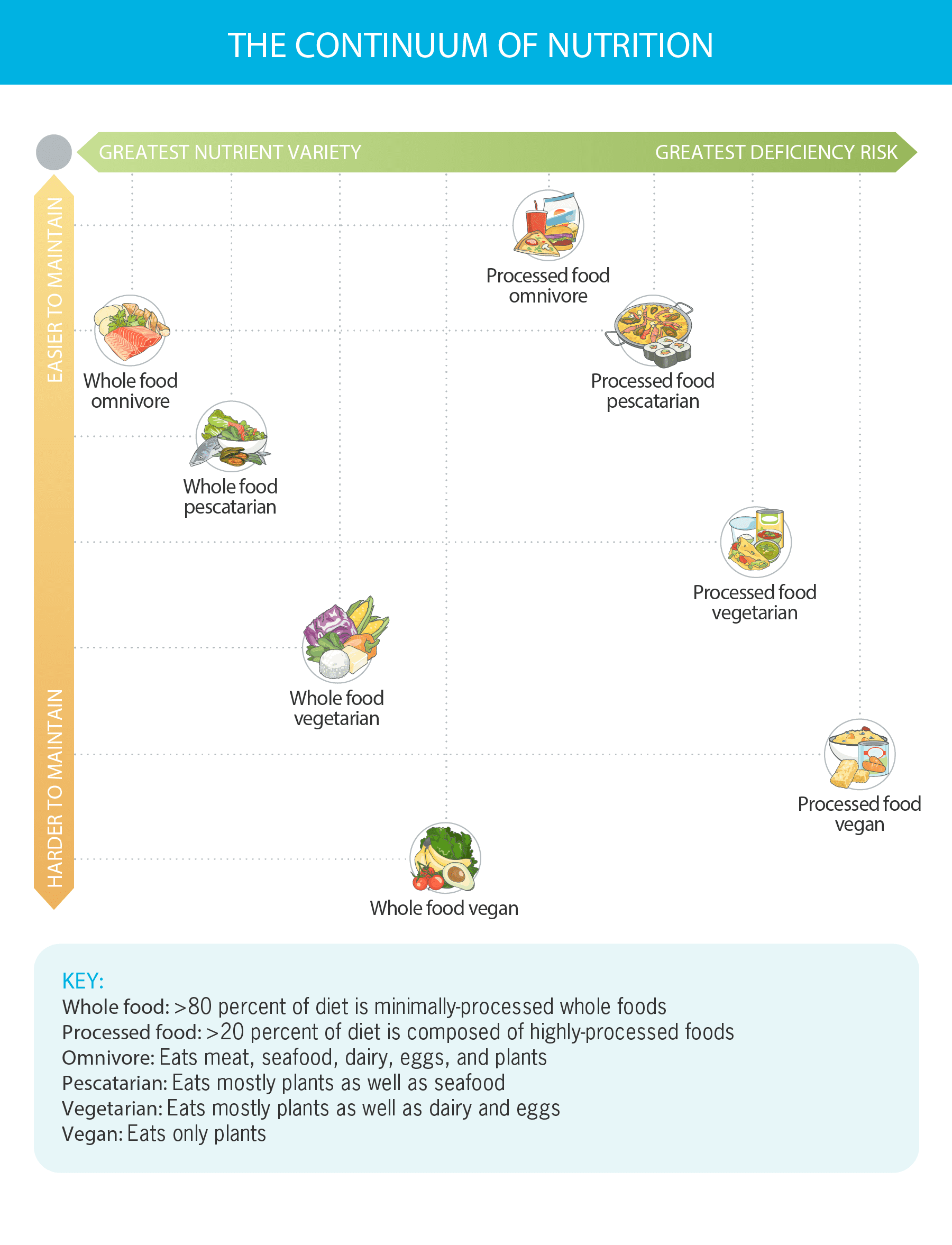
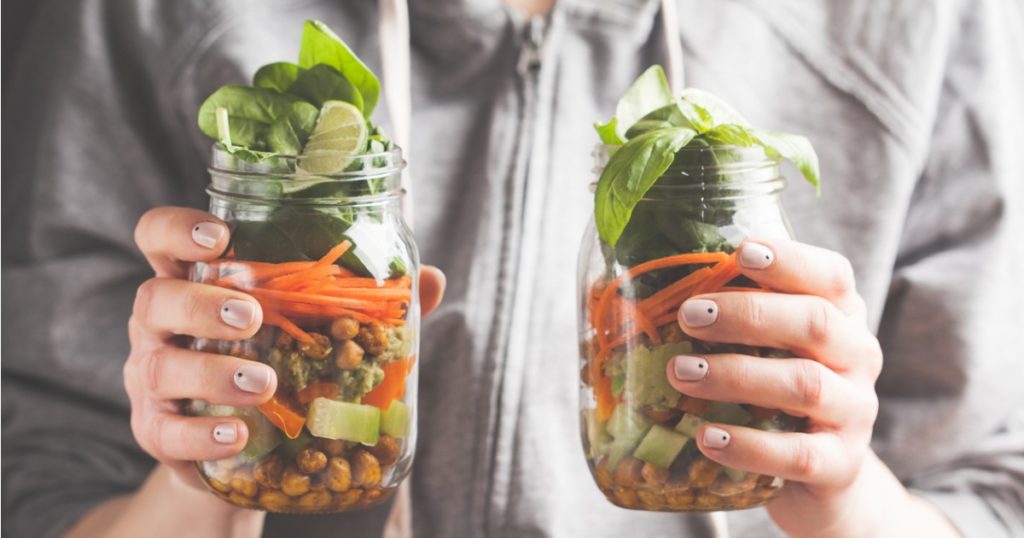
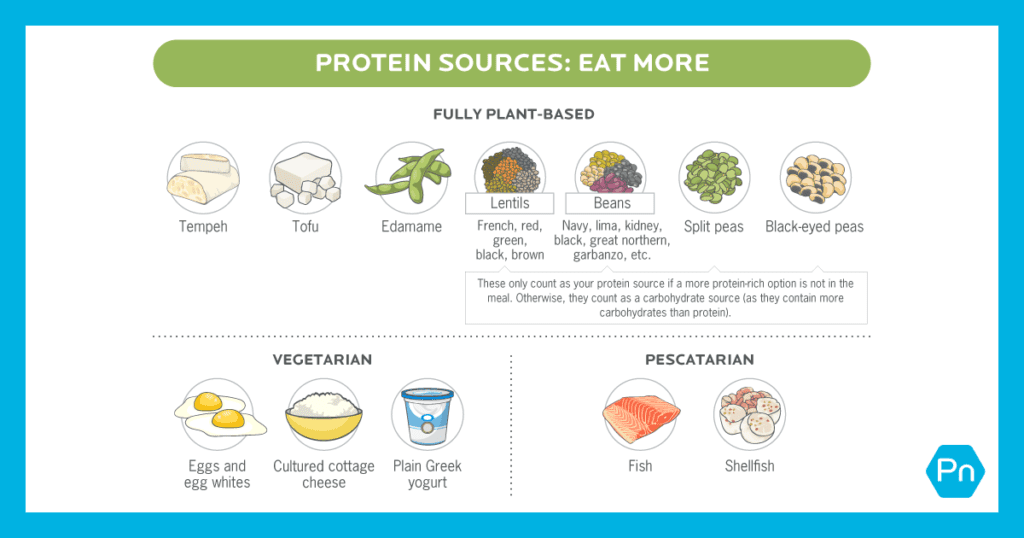
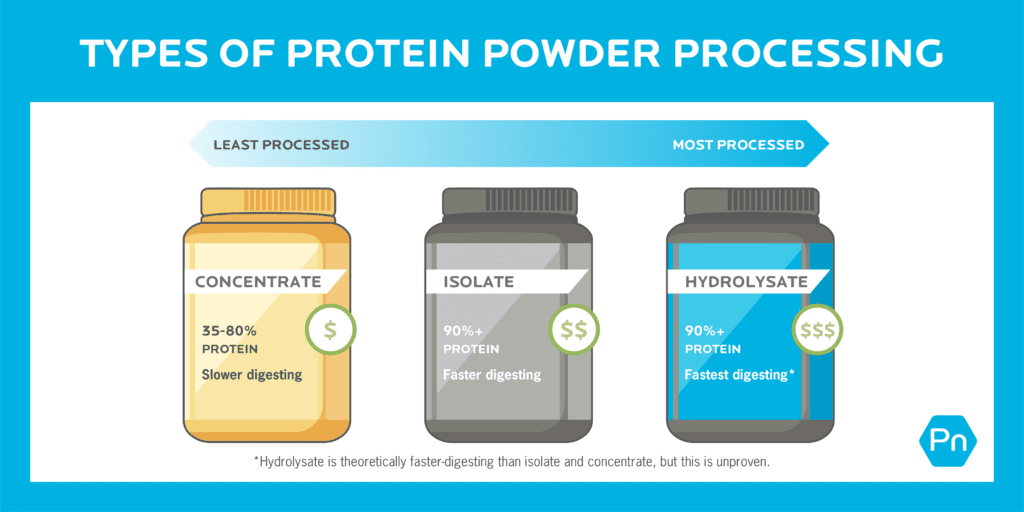
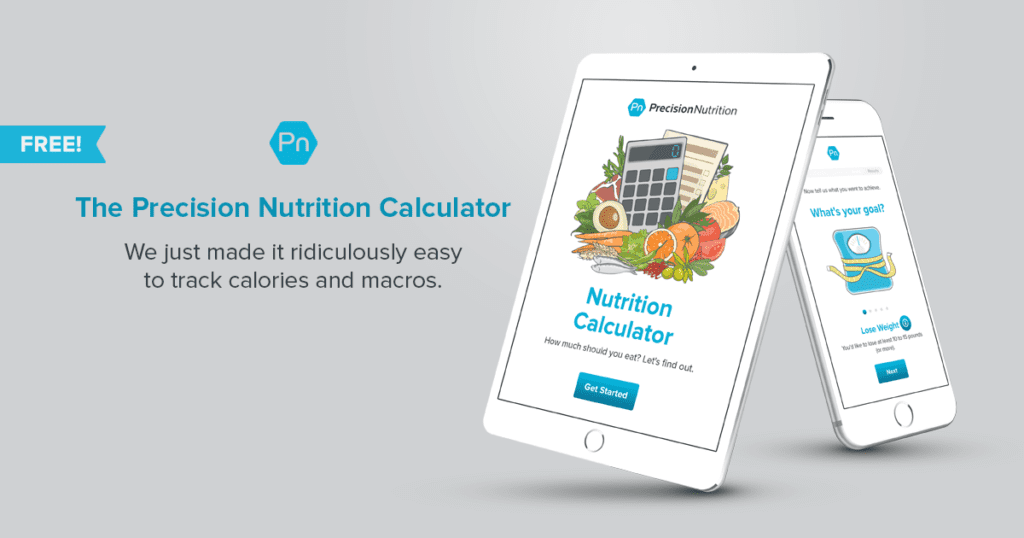
Share